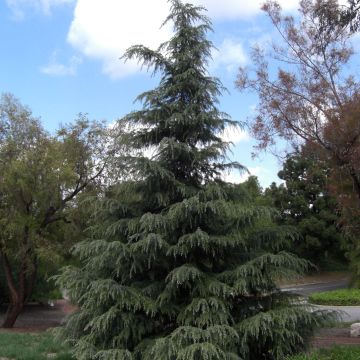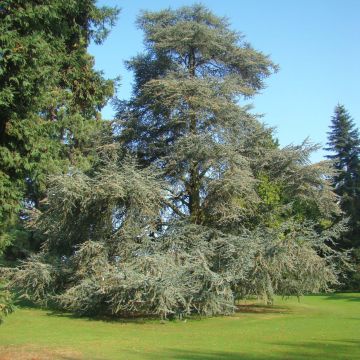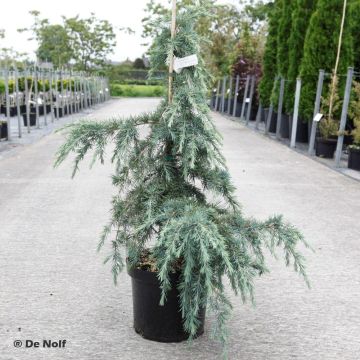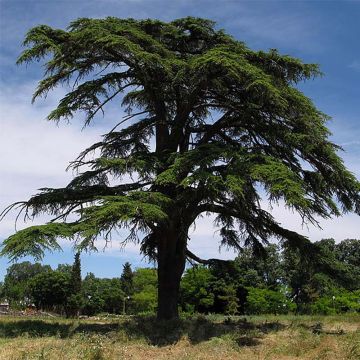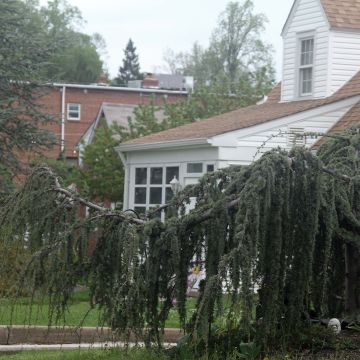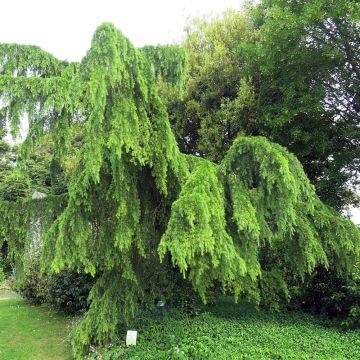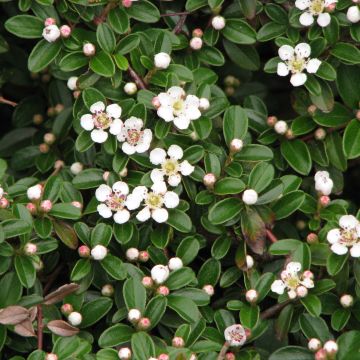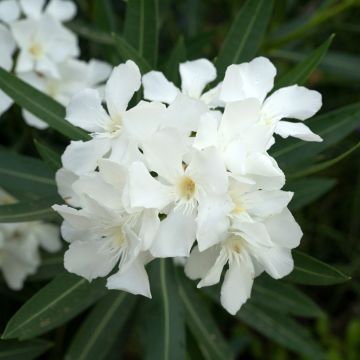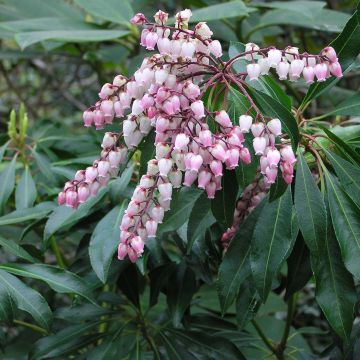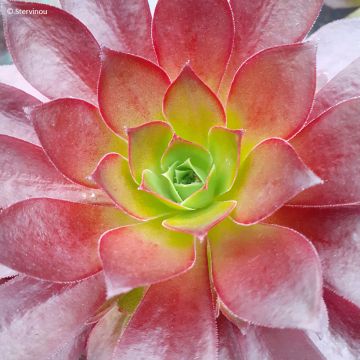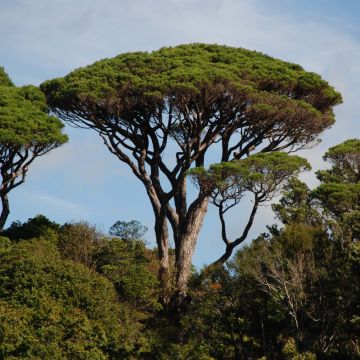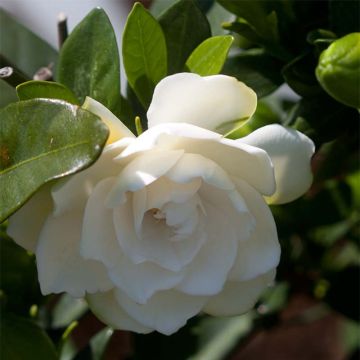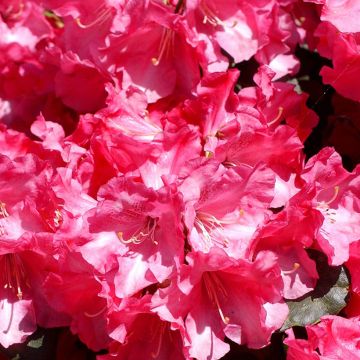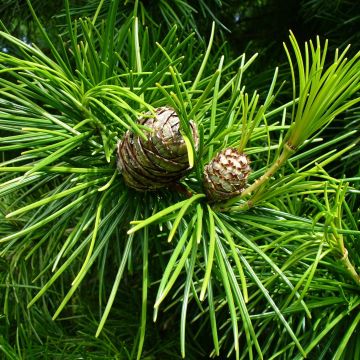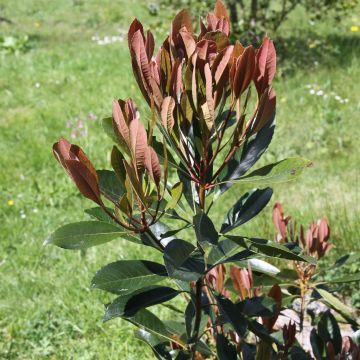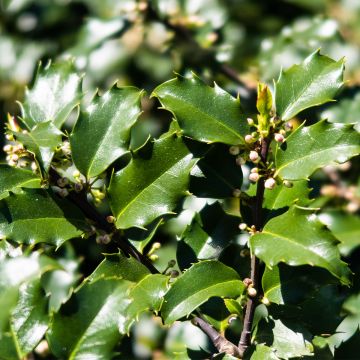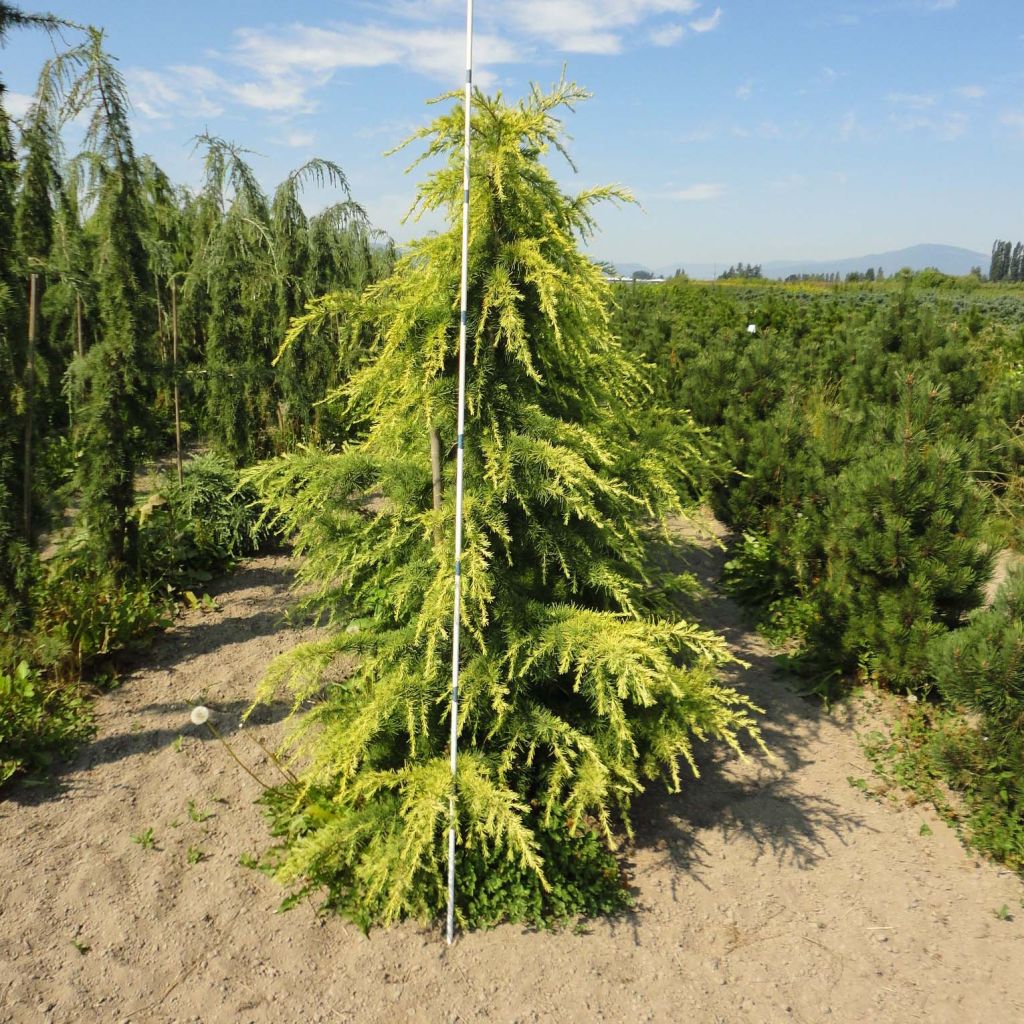

Cedrus deodara Aurea - Himalayan Cedar
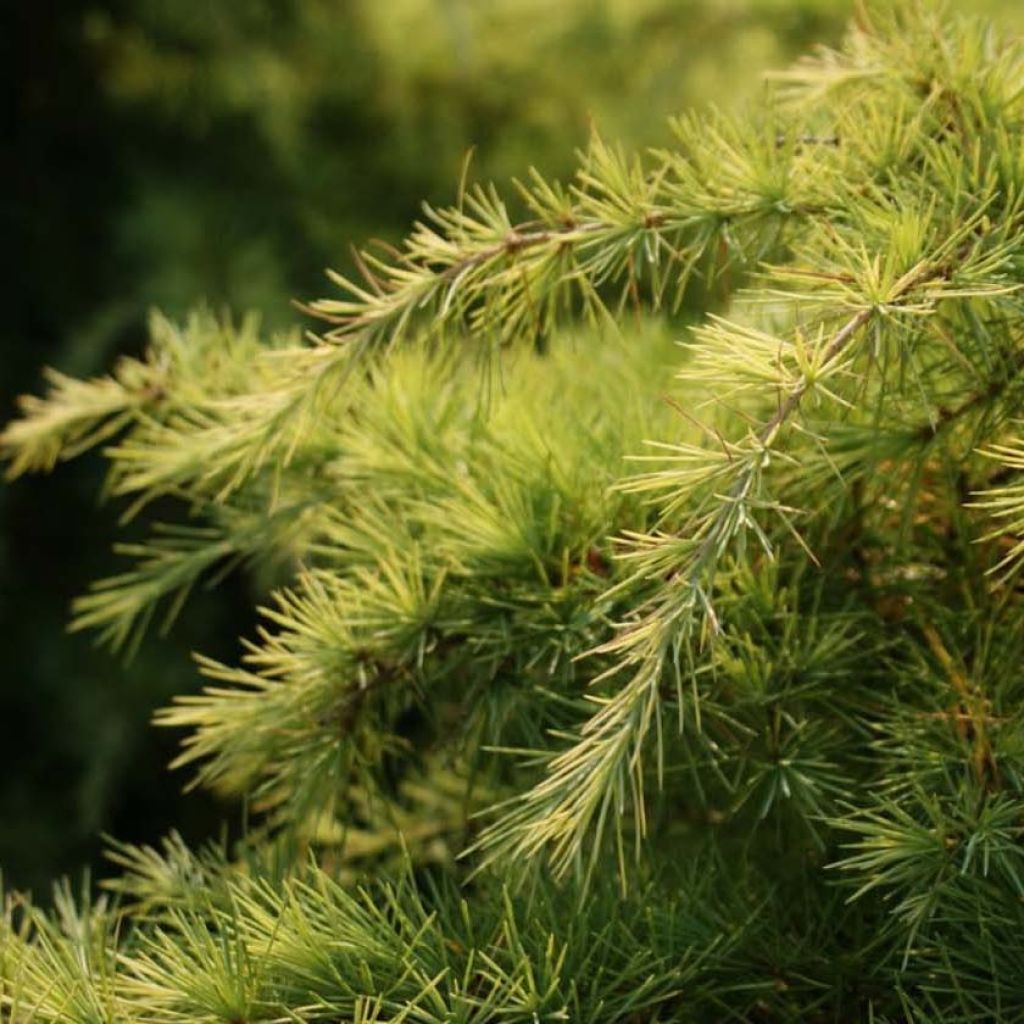

Cedrus deodara Aurea - Himalayan Cedar
Cedrus deodara Aurea - Himalayan Cedar
Cedrus deodara Aurea
Deodar Cedar, Himalayan Cedar
Why not try an alternative variety in stock?
View all →This plant carries a 24 months recovery warranty
More information
We guarantee the quality of our plants for a full growing cycle, and will replace at our expense any plant that fails to recover under normal climatic and planting conditions.
From €5.90 for pickup delivery and €6.90 for home delivery
Express home delivery from €8.90.
Does this plant fit my garden?
Set up your Plantfit profile →
Description
The Cedrus deodara 'Aurea', better known as the golden Himalayan cedar, is distinguished from the species by its slower and more moderate growth, as well as its bright spring foliage. It has a beautiful pyramidal habit with slightly drooping branches. Ideal for medium-sized gardens, it will become one of the star plants in just a few years.
The Cedrus deodara belongs to the family of Pinaceae. It is native to high-altitude temperate forests (between 1500 and 3000 metres (4921 feet 4 inches and 9842 feet 6 inches) above sea level) that cover the southern foothills of the Himalayas. Its distribution range extends from Afghanistan to Tibet, India, Nepal, and Pakistan. The cultivar 'Aurea' was selected in 1866 by J. Nelson. In our climate, it reaches an average height of 8 metres (26 feet 2 inches) with a spread of 6 metres. Its growth is slower than that of the species. Its overall habit is pyramidal and dense. It develops a very vertical trunk, covered with a greyish, dark bark that cracks into large irregular scales. Its branches, almost horizontal, bear trailing secondary branches. The terminal shoots also droop, giving it a slightly weeping appearance. The top of this cedar does not flatten over the years. The needles are grouped in clusters. They are 3 to 5 cm (1.2 to 2 in) long, flexible, and golden yellow when they emerge, becoming tender green. Male and female cones coexist on the same tree. They measure 7 to 12 cm (2.8 to 4.7 in) long and 5 to 9 cm (2 to 3.5 in) wide. They consist of fine scales, each containing a seed extended by a wing. These large seeds will germinate easily after winter and exposure to cold temperatures.
The Cedrus deodara 'Aurea' is a majestic conifer that is best planted as a specimen to fully appreciate its beautiful silhouette. If space allows, multiple trees can be planted along a pathway, creating a whole new dimension and a style that is both original and romantic. Make sure to space the trees sufficiently so that they do not overcrowd each other in the future. Surprisingly, the sacred cedar also adapts well to bonsai cultivation. Due to its lighter foliage, the 'Aurea' cultivar will appreciate a partially shaded exposure in regions with hotter summers.
Report an error about the product description
Cedrus deodara Aurea - Himalayan Cedar in pictures
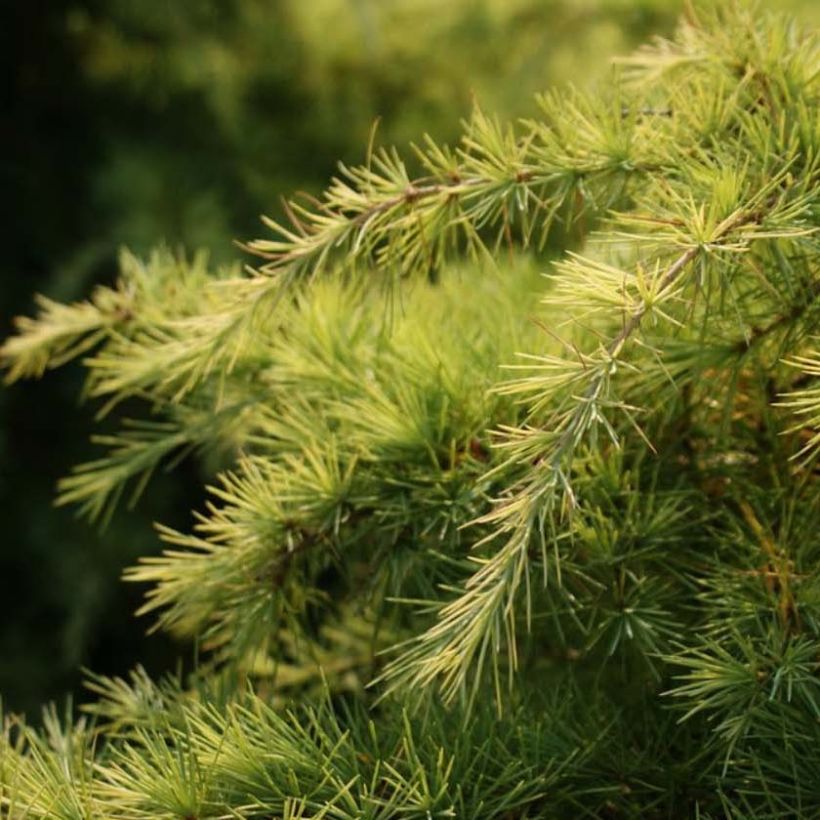

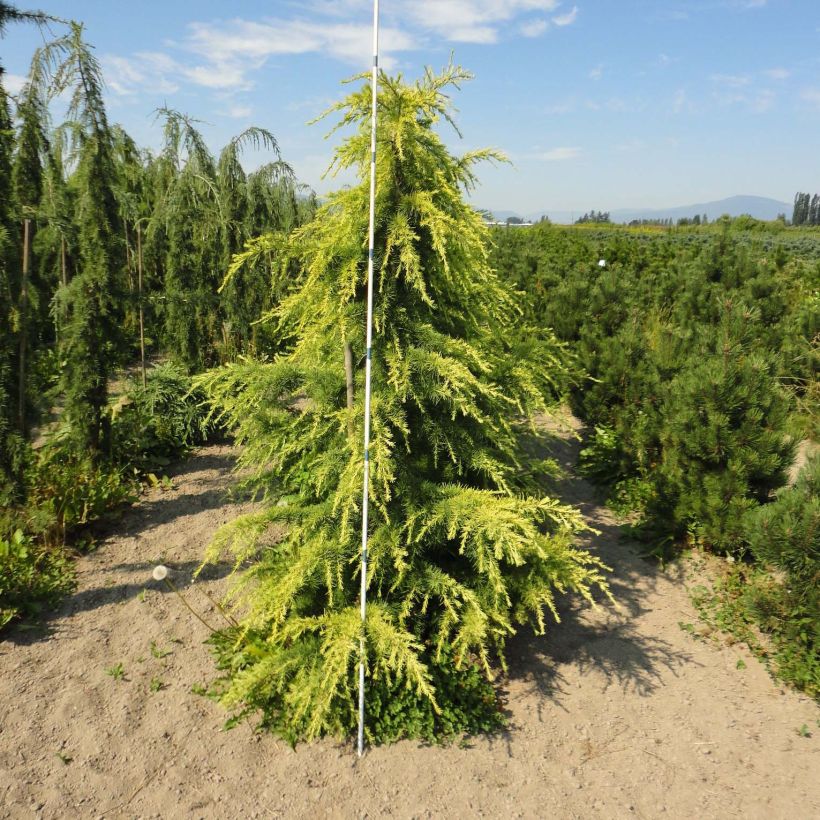

Plant habit
Foliage
Botanical data
Cedrus
deodara
Aurea
Pinaceae
Deodar Cedar, Himalayan Cedar
Cultivar or hybrid
Other Cedar
Planting and care
The Himalayan cedar tree grows best in humid climates during the summer and can withstand cold temperatures. It can be planted in ordinary soil between September and November or between February and June, as long as the soil is deep enough. The tree can tolerate slightly acidic to slightly alkaline soil and does not require specific soil conditions.
When choosing a spot to plant the tree, select a very sunny location that is well-cleared and anticipates the tree's significant growth. Avoid disturbing the tree once planted, as its roots must anchor firmly in the soil to withstand drought and wind. Before planting, make sure to soak the root balls well.
To help your young cedar establish, water it regularly, especially during the first two to three years, particularly in the summer. When planting, apply an organic improver such as blood, fish and bone. Additionally, you may use a special conifer fertiliser every year in April and cultivate the soil in the summer.
Pruning is generally unnecessary except to shape the tree or remove branches that die at the base of the trunk as it grows.
Planting period
Intended location
Care
This item has not been reviewed yet - be the first to leave a review about it.
Evergreen shrubs
Haven't found what you were looking for?
Hardiness is the lowest winter temperature a plant can endure without suffering serious damage or even dying. However, hardiness is affected by location (a sheltered area, such as a patio), protection (winter cover) and soil type (hardiness is improved by well-drained soil).

Photo Sharing Terms & Conditions
In order to encourage gardeners to interact and share their experiences, Promesse de fleurs offers various media enabling content to be uploaded onto its Site - in particular via the ‘Photo sharing’ module.
The User agrees to refrain from:
- Posting any content that is illegal, prejudicial, insulting, racist, inciteful to hatred, revisionist, contrary to public decency, that infringes on privacy or on the privacy rights of third parties, in particular the publicity rights of persons and goods, intellectual property rights, or the right to privacy.
- Submitting content on behalf of a third party;
- Impersonate the identity of a third party and/or publish any personal information about a third party;
In general, the User undertakes to refrain from any unethical behaviour.
All Content (in particular text, comments, files, images, photos, videos, creative works, etc.), which may be subject to property or intellectual property rights, image or other private rights, shall remain the property of the User, subject to the limited rights granted by the terms of the licence granted by Promesse de fleurs as stated below. Users are at liberty to publish or not to publish such Content on the Site, notably via the ‘Photo Sharing’ facility, and accept that this Content shall be made public and freely accessible, notably on the Internet.
Users further acknowledge, undertake to have ,and guarantee that they hold all necessary rights and permissions to publish such material on the Site, in particular with regard to the legislation in force pertaining to any privacy, property, intellectual property, image, or contractual rights, or rights of any other nature. By publishing such Content on the Site, Users acknowledge accepting full liability as publishers of the Content within the meaning of the law, and grant Promesse de fleurs, free of charge, an inclusive, worldwide licence for the said Content for the entire duration of its publication, including all reproduction, representation, up/downloading, displaying, performing, transmission, and storage rights.
Users also grant permission for their name to be linked to the Content and accept that this link may not always be made available.
By engaging in posting material, Users consent to their Content becoming automatically accessible on the Internet, in particular on other sites and/or blogs and/or web pages of the Promesse de fleurs site, including in particular social pages and the Promesse de fleurs catalogue.
Users may secure the removal of entrusted content free of charge by issuing a simple request via our contact form.
The flowering period indicated on our website applies to countries and regions located in USDA zone 8 (France, the United Kingdom, Ireland, the Netherlands, etc.)
It will vary according to where you live:
- In zones 9 to 10 (Italy, Spain, Greece, etc.), flowering will occur about 2 to 4 weeks earlier.
- In zones 6 to 7 (Germany, Poland, Slovenia, and lower mountainous regions), flowering will be delayed by 2 to 3 weeks.
- In zone 5 (Central Europe, Scandinavia), blooming will be delayed by 3 to 5 weeks.
In temperate climates, pruning of spring-flowering shrubs (forsythia, spireas, etc.) should be done just after flowering.
Pruning of summer-flowering shrubs (Indian Lilac, Perovskia, etc.) can be done in winter or spring.
In cold regions as well as with frost-sensitive plants, avoid pruning too early when severe frosts may still occur.
The planting period indicated on our website applies to countries and regions located in USDA zone 8 (France, United Kingdom, Ireland, Netherlands).
It will vary according to where you live:
- In Mediterranean zones (Marseille, Madrid, Milan, etc.), autumn and winter are the best planting periods.
- In continental zones (Strasbourg, Munich, Vienna, etc.), delay planting by 2 to 3 weeks in spring and bring it forward by 2 to 4 weeks in autumn.
- In mountainous regions (the Alps, Pyrenees, Carpathians, etc.), it is best to plant in late spring (May-June) or late summer (August-September).
The harvesting period indicated on our website applies to countries and regions in USDA zone 8 (France, England, Ireland, the Netherlands).
In colder areas (Scandinavia, Poland, Austria...) fruit and vegetable harvests are likely to be delayed by 3-4 weeks.
In warmer areas (Italy, Spain, Greece, etc.), harvesting will probably take place earlier, depending on weather conditions.
The sowing periods indicated on our website apply to countries and regions within USDA Zone 8 (France, UK, Ireland, Netherlands).
In colder areas (Scandinavia, Poland, Austria...), delay any outdoor sowing by 3-4 weeks, or sow under glass.
In warmer climes (Italy, Spain, Greece, etc.), bring outdoor sowing forward by a few weeks.

































